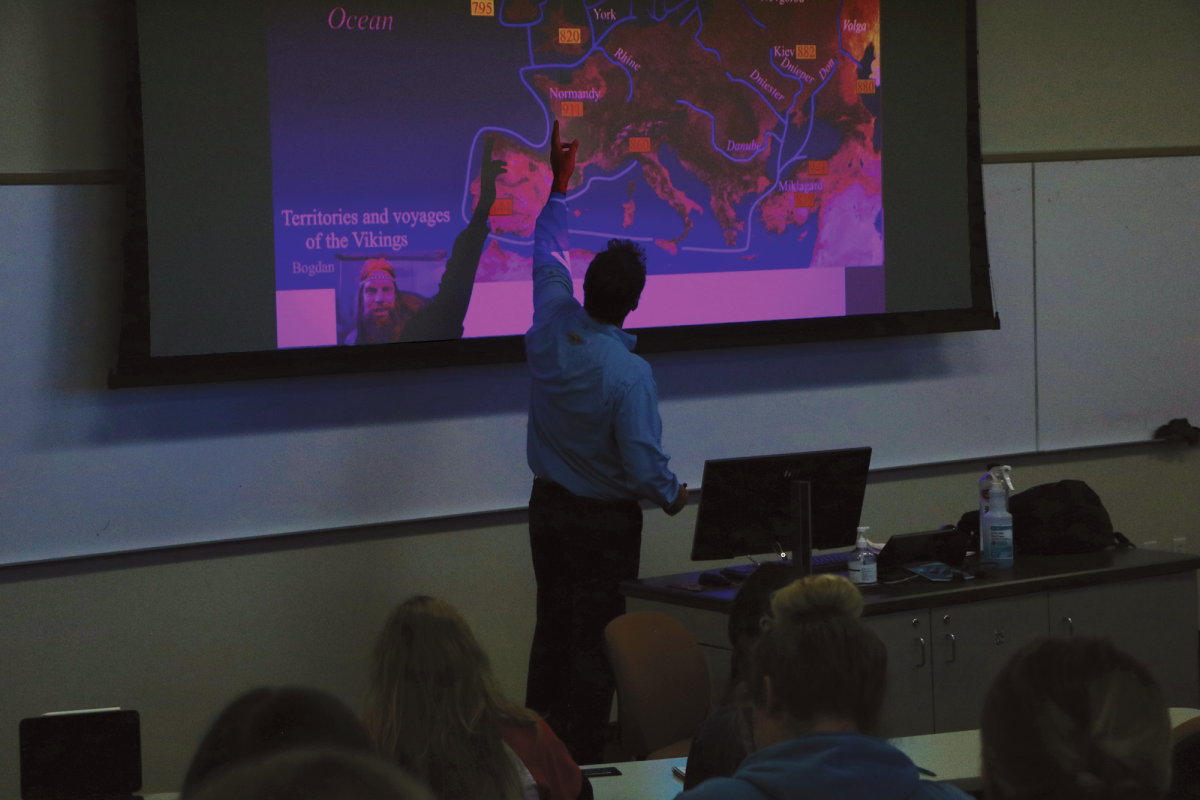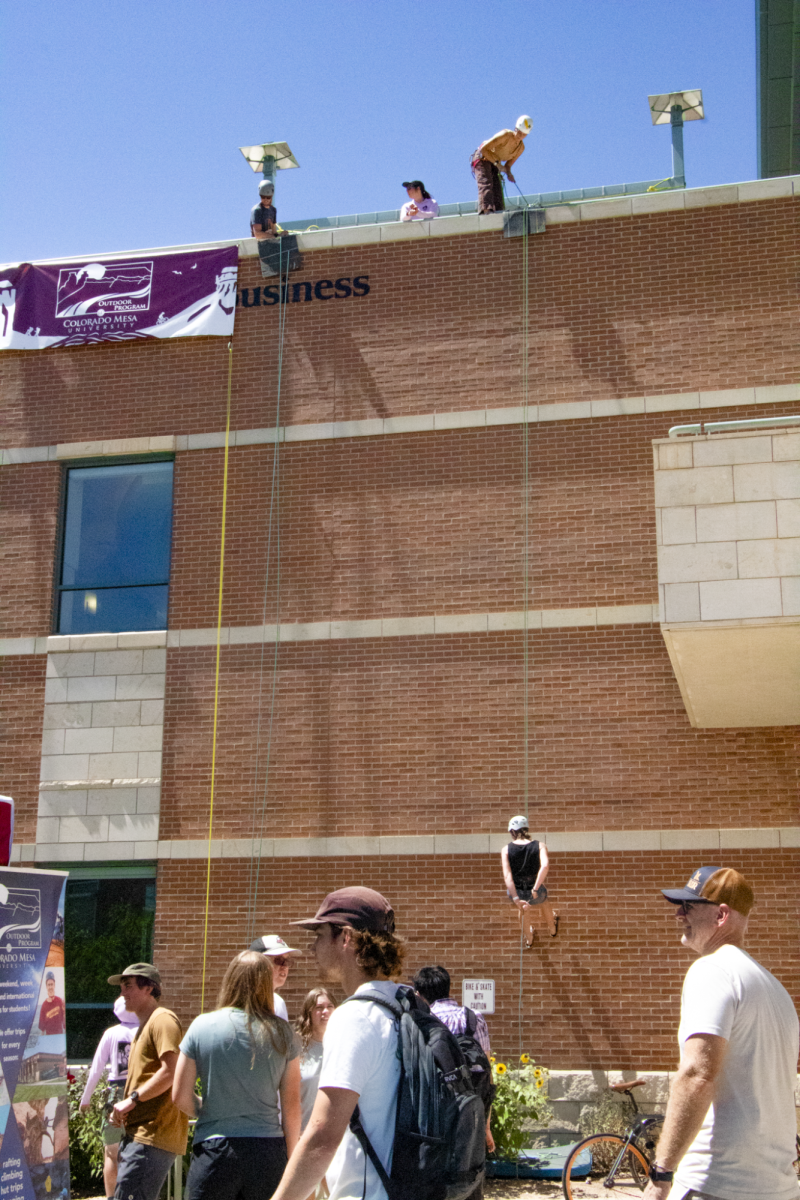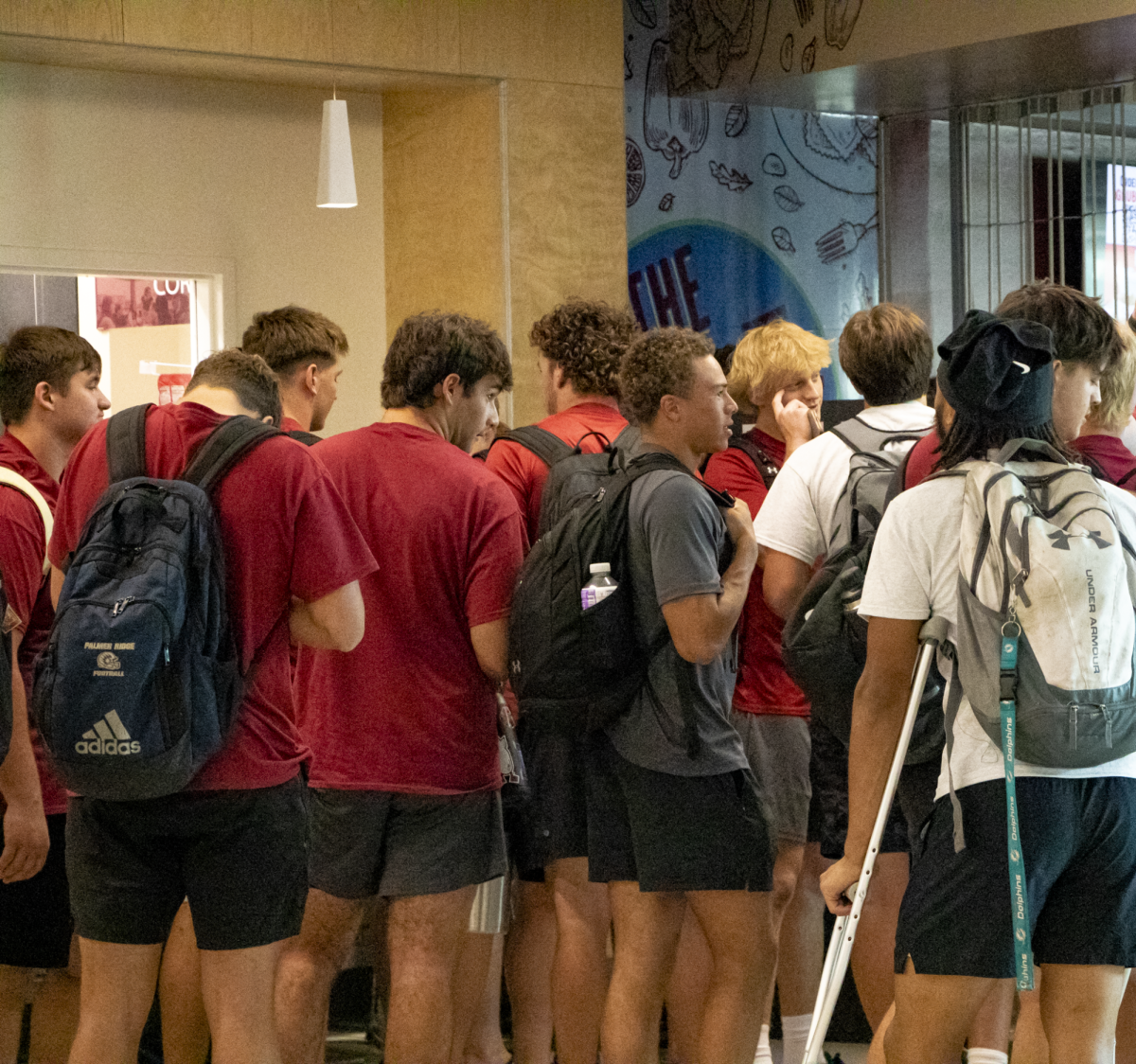The newly released Netflix docuseries “What’s Next? The Future with Bill Gates” recently featured a special guest from Colorado Mesa University (CMU).
History professor Dr. Timothy Winegard appeared on screen, addressing a favorite subject of his: mosquitoes.
Winegard loves what he does, and people love what other people are passionate about. The proof is in the pudding when it comes to Winegard and history. I find myself reciting random facts I learned in class to my friends and family, which is simple proof that perfection lies within the passion.
Winegard first reached out to the Gates Foundation during his research for his New York Times Best-selling book “The Mosquito”. The Gates Foundation is “the biggest non-governmental contributor to mosquito borne pathogen research, specifically malaria.” Winegard continued to build this relationship with the Gates foundation, including Bill Gates tweeting out his book.
When it was time to create this new film, the Gates Foundation reached out and asked for his participation, specifically in the episode surrounding malaria (Episode 5).
Winegard had numerous stories to tell about how the filming process was done during his time featured on the docuseries.
When watching the finished scene, Winegard appears sitting in a wondrous lab full of sentimental historical objects, but in reality he revealed that it was simply a green screen. Ah, the magic of movies!
Many have always wondered who the frick the interviewee is talking to during documentaries. Is it a wall? An interviewer? Another camera?
Well, in this specific documentary, Winegard explained that there was indeed an individual behind the camera asking the questions, but there was another person sitting in a nearby chair.
The extra person functioned as the focal point, simply giving a smile and nod at whatever the interviewee was saying to them.
Winegard is an expert on the malaria epidemic and his expertise in history gives context to the episode.
From how it came to be to the exact separation of the mosquito proboscis (its long nose), Winegard was like a human encyclopedia, and it led to further discussion and consideration of the concerns surrounding such a complex disease and its origins.
“Malaria has been the biggest killer of humanity across our existence more than other humans, more than any other disease, more than anything. We’ve tried everything to combat this very sophisticated parasite. It’s not a virus. It’s not a bacteria. It’s not a worm. It’s not fungi. It’s a very sophisticated plasmodium parasite that has seemingly thwarted our frontline weapons for our human existence. It’s crazy. And it’s all from this little mosquito,” said Winegard.
When asked why this disease specifically chose the mosquito, he stated it’s because these creatures are “universal”. Which makes a lot of sense as to why it is such a killer to humanity: The mosquito is found everywhere.
“The good and bad news is malaria was eradicated in the US in 1951 with the use of DDT. So unfortunately, malaria right now is confined predominantly to Africa and other very underdeveloped places,” said Winegard.
So how can the average person help with this on-going epidemic? It’s a difficult question to answer, as this disease doesn’t have a known cure at the moment.
Foundations like the Gates have proved that, with generous donations and research, help can still be provided in multiple ways.
Winegard has written six books across his career, participated in multiple documentaries, including another called “The Battle to Beat Malaria”, which was nominated for an Emmy for Best Documentary. What’s next for this inspiring CMU professor?
“I guess coaching hockey,” said Winegard, jokingly. He did further clarify that he had quite a few ideas regarding his next venture.
Having an example like Professor Winegard at Mesa University is a privilege in itself, as is his talent of inspiring students and staff to follow their passions and do it with wit and pride that extends distances.









